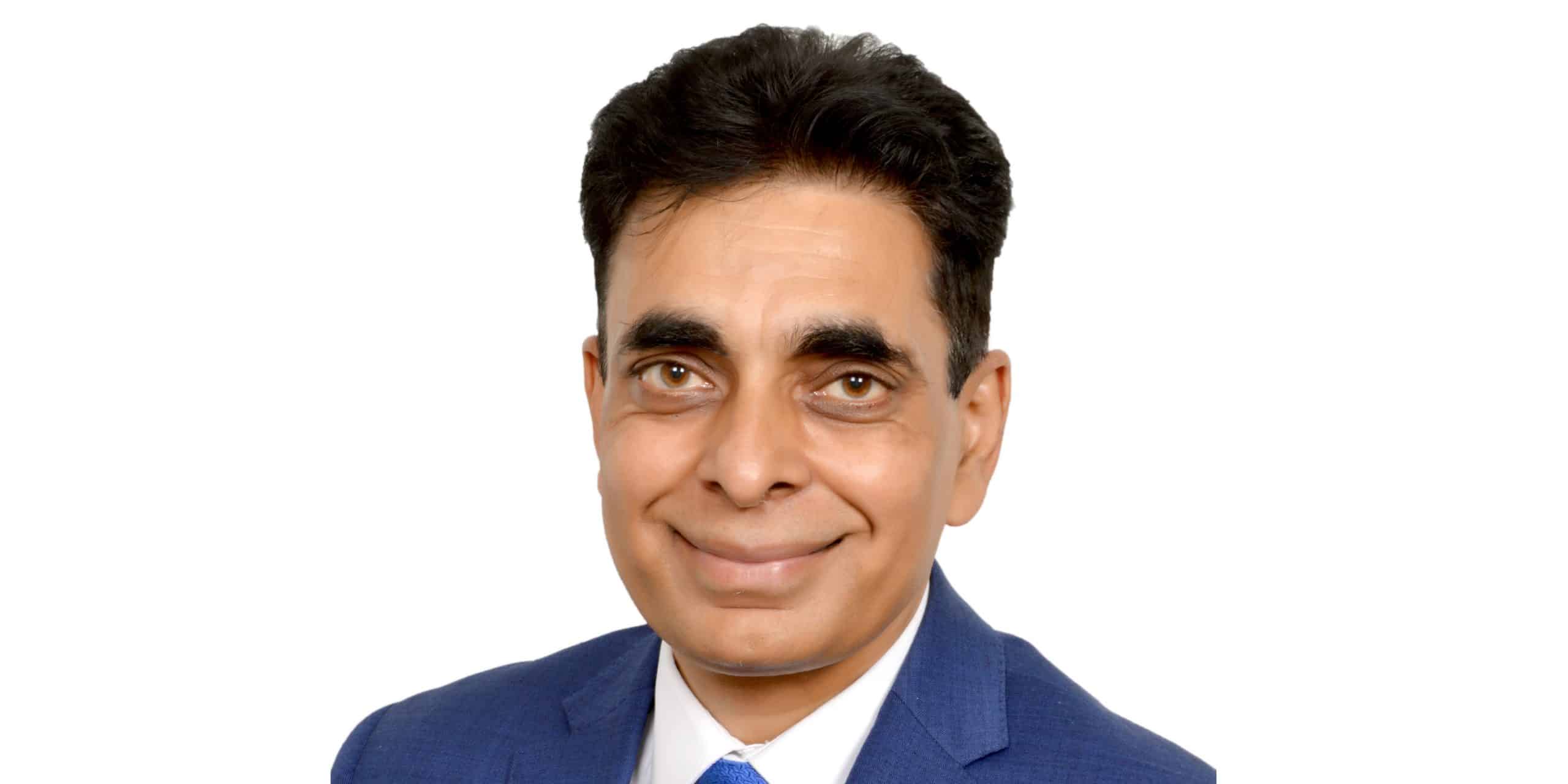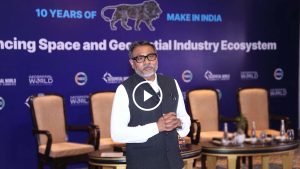From the first industrial revolution of the assembly line that unveiled newer socio-economic paradigms and scientific breakthroughs, to the invention of semiconductors that redefined innovation and spawned the age of electronics and computing, seismic industrial transformations have had a profound impact on everything.
The upcoming Fourth Industrial revolution is going to be more overreaching than all of its precursors owing to the power of tech convergence, precise analytics, AI and unparalleled connectivity.
World Economic Forum has a dedicated center to analyze the disruptive potential of these technologies and enabling a smooth socio-economic transition through collaboration, research and innovation.
Centre for Fourth Industrial Revolution(C4IR), World Economic Forum, India has partnerships across industries, startups, multi-lateral institutions, industry associations, professional services organizations, citizen and farmer bodies, social entrepreneurs and NGOs. It has also joined hands with NITI Aayog, Ministry of Agriculture, Smart cities mission and state governments of Telangana, Madhya Pradesh, Karnataka, and Arunachal Pradesh.
“Key initiatives of WEF C4IR in India are in agriculture, healthcare, urban transformation, education and circular economy. In the future, we will be exploring advanced energy and manufacturing as additional priorities”, says Purushottam Kaushik, Head, Center for Fourth Industrial Revolution, World Economic Forum, India, in an exclusive interview.
Fourth Industrial revolution would be both an evolutionary transition and a revolutionary disruption, which makes it distinct and more sweeping than all previous industrial epochs. What do you think would be its impact, and how do you foresee India’s readiness for this transition ahead?
4th Industrial revolution is a portfolio of frontier technologies like AI, Blockchain, IOT, drones, synthetic biology, quantum computing, space technologies and advanced energies that are already shaping the future for us and creating a revolutionary impact in our lives.
These technologies offer huge opportunity for India to leapfrog in transforming our food systems, urban ecosystems, healthcare, education, mobility, manufacturing, and energy systems. The current constraints on resources and the burgeoning needs of our nation will get balanced by improving efficiencies and enhancing sustainability.
However, considering more than 60% of our population is dependent on agriculture, and a significant proportion is urban poor, inclusivity has to be a big priority with an objective of 4IR for all.
What do you think are the key technology trends in India that will help foster greater innovation and can make the country’s economy more vibrant and dynamic, paving the way for 4IR?
Key technologies transforming Indian economy and social sector would be AI, drones, IOT and Big Data that are already inclusive across most of the sectors.
5G, Quantum, synthetic biology and space tech are getting integrated across most of the core domains, and the economic benefits will be felt in next few years.
In a recent report by MIETY, leveraging 4IR technologies can help generate 1T$ incremental GDP by 2025. Some of the key trends would be in agriculture which would generate $65B. Financial services would be another big opportunity generating around $120 B .
There is a significant potential across healthcare, education and future of energy which will be a big opportunity, creating 90-100 B$ incremental economic benefit.
What are the main projects of Centre for 4IR in South Asia, and do you see any inconsistency in the goals, alignments and priorities of the different countries towards 4IR?
Th key initiatives in India are agriculture, healthcare, urban transformation, education and circular economy. In the future, we will explore advanced energy and manufacturing as additional priorities that will help shape the larger social benefit agenda with the help of multi-stake holder alignment and public private partnerships across the ecosystem.
There is not much inconsistency in goals and alignments across various Asian economies as challenges and opportunities are almost similar.
There is huge collaborative potential between various Asian economies in dealing with challenges in technology governance, and some of the unique case studies across healthcare, education and urban transformation can be shared for cross learning.
India center actively collaborates with 15 other centers across South America, Africa, Middle East, and Europe. We are already sharing the best practices in agriculture and health initiatives.
What is the post-pandemic vision of WEF India, and how do you think can we become more resilient to future disruptions, and geared towards sustainability at a time of severe ecological crisis?
Pandemic disrupted ecosystems, social fabric, economic structures, and livelihoods. Most adverse impact is visible in education and health systems.
The need of multi stakeholder collaboration and role of 4IR technologies is now more relevant than ever. World Economic Forum is playing a significant role in enabling collaboration and partnerships between public, private and social institutions while driving technology governance and sectoral impact dialogs.
There is a need of sustainability across food systems, education, manufacturing and urban systems. All of our initiatives have sustainability and inclusivity as core pillars.
4IR is about technological convergence and unlocking innovation to power digital transformation, but perhaps some technologies are more equal than others. What do you think are the technologies at the core of 4IR and what are at its periphery?
AI, IOT, Big data, Block chain, 5G are getting converged across sectors, transforming livelihoods and creating economic benefits. The role of C4IR India has been to scale the positive impact of these technologies, ensuring that the benefits are distributed more inclusively across all sections of the society.
We have also been focusing on the responsible use of technologies through our state partnerships. In Karnataka we have established Centre for Internet for Ethical Things, and in Telangana we have the Center for Responsible Deployment of Emerging Technologies.
There are some frontier technologies that are still evolving and will go through maturity curve cycle before they become visible across sectors. Quantum, synthetic biology, space technologies, autonomous driving, nuclear fusion are in initial stages and getting integrated in small scale across few sectors.
When it comes to any technological transformation, there are behavioral, institutional forces resistant to change that exert an inertial pull and stymie progress. What do you think could be these forces in the Indian context?
Technology transformation happens in phases, and any resistance to change needs to be managed through multi stakeholder conversations. Some of the resistance is on account of perceived negative impacts such as irresponsible use of AI that which may have an impact due to unexplainable false positives or false negatives.
Also, there are big concerns around privacy and security breaches of data and creation of new monopolies. Inclusivity, as well, is driving lots of resistance which need to be addressed through stakeholder conversations.
Another big challenge is the need of new skills and bridging gaps for emerging technologies. These issues cannot be brushed aside and need to be fully addressed to realize the full potential of 4IR technologies.
Digital Divide is a glaring issue that has widened post pandemic and has the potential to turn back the progress made in connectivity, financial inclusion, and equitable access to services. What can be done to reduce it?
Digital divide is a big challenge in realizing full potential of emerging technologies, and we are enabling various stakeholders to come together and help resolve it.
In our recent initiative on FIRST (Fourth Industrial Revolution for Sustainable Transformation) cancer care, we are exploring a framework to leverage AI and IOT devices to enable early cancer detection in remote geographies that don’t have cancer care facilities.
Similarly, in our Initiative on Education (KINDLE), we are exploring how connectivity and devices can be help resolve education gap. The challenges of digital infrastructure and economic devices will get addressed as advanced technologies become more inherent across these solutions.
Also Read: Balance of Innovation key to Balance of Power, says Parag Khanna









